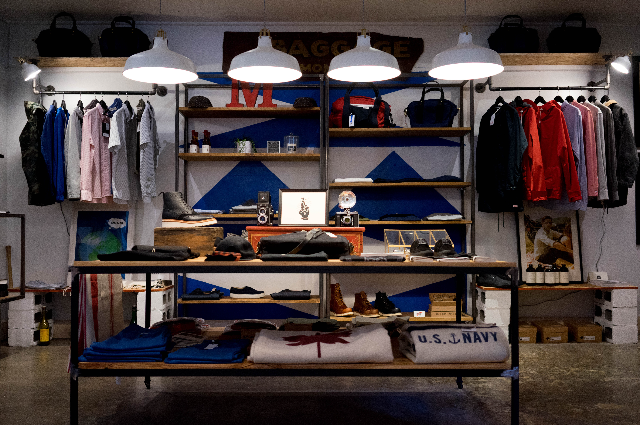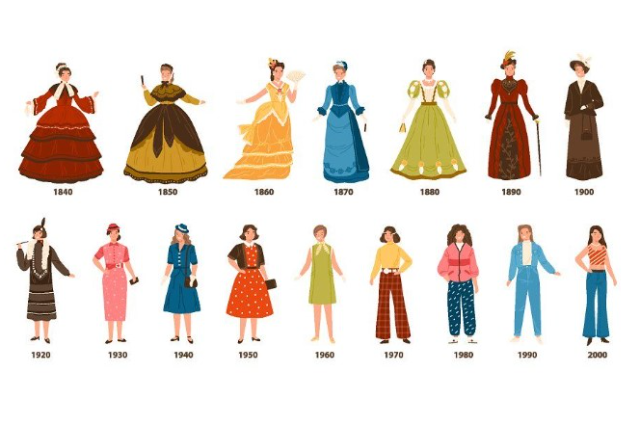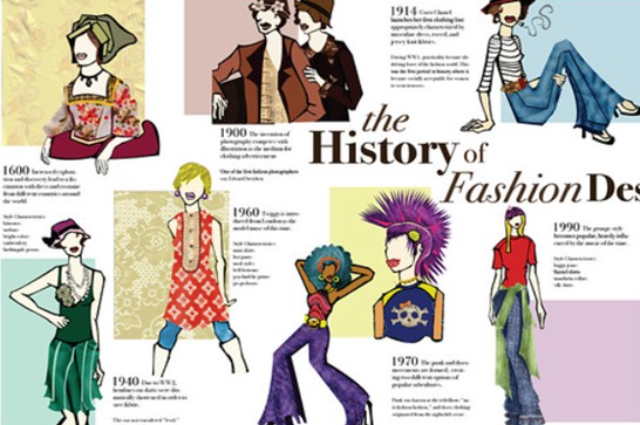
Source: Clark Street Mercantile on Unsplash
What is creativity?
The relationship between a human being and the mysteries of inspiration.
- Elizabeth Gilbert
Fashion is fluid, it's a sacred ritual of expressing one's creative mind. It's not static and our constantly changing wardrobes reveal that. But what is it about fashion that has made it such an important aspect of our lives? How did it evolve from a matter of consumption to a creative and innovative expression? The courage to show up as oneself is what makes this gray experience so captivating.
This voyage to fashion began around 170,000 thousand years ago when humans began wearing clothes to migrate to colder regions but, there could indeed be more to the story considering the very fact that the tribes in the warmer climate of tropics used Tattoos as a popular form of body decoration So, perhaps the concept of apparel surfaced with tattoos as a way to beautify one's body.
Fashion designers have been constantly pushing the boundaries of creativity and most often they do this by looking back to periods of history. The fashion world has undergone major changes during the past couple of decades. From the punky ‘90s to the eco-friendly '00s, there's a total comeback happening.
THE DEBUT OF FASHION
In 1850, the world became fascinated with fashion and began to view clothing through rose-colored glasses. This age of modern fashion was dominated by the most significant developments in engineering, chemistry, and communications. It developed swiftly, and fashionable clothing became more widely available. Women's attire was heavily influenced by Parisian fashion during this period.
During the Victorian era, women wore corsets and hoop skirts with a small waist and large puffy skirts. In the 1850s, hoop skirts were called 'cage crinolines,' as they were a sartorial expression of victorian prudery, as the name 'cage' suggests. Certain women were ready to push for dress reforms, the most notable of whom was Amelia Bloomer. She and her supporters wore puffy pants that were known as bloomers in her honor. this era was a representation of colonization by Britain. Pagoda dresses, which have a similar construction to a building called a pagoda in Asia, and paisley shawls, a famous style of print in India, marked a surge in imperialism in fashion. We saw a variety of exciting innovations and an embrace of fun throughout the 1890s, commonly known as the gay nineties. Women needed to be mobile in this increasingly busy and novelty-filled society, and fashion responded to this thrilling new world with a whole new silhouette. Hoop skirts were replaced with more practical A-line skirts. and practical fashion meant the first real suit for women. Electricity was booming in the 1890s, and fashion responded with puffy sleeves in the resemblance of a bulb. During this time, the first sportswear and swimsuits were introduced. The world evolved quickly in the nineteenth century, and fashion responded. It began with carriages and ended with a car.

THE EDWARDIAN ERA
The 1900s and 1910s were an era of glamor when women's fashion went through a major change. For the first time, women dared to show their ankles in public. They also started wearing make-up. There were two major reasons for this change in fashion: World War I and Hollywood movies.
Women needed to replace male workers who had gone off to fight in World War I, so they took over male jobs while the men were away, including factory work. This changed their perspectives because they saw themselves as equals to men. It also helped them get rid of their corsets which symbolized Victorianism - a movement that pushed for more conservative values during this period. One other reason for the change in fashion was Hollywood movies. The world was becoming modern and so were women. 1920s women won the right to vote and they sure were acting as if. The Roaring Twenties was an era of carefree flapper girls who rebelled against the norms of society. They wore short skirts, drank alcohol, and danced without any restrictions.
Fashion during this time reflected these values with shorter hemlines, lower necklines, and clingy fabrics that allowed for more movement. In contrast to the 1920s, 1930s fashion was characterized by its simplicity and modesty with long hemlines and high necklines. The 1940s, fashion went to war. Fashion came to a halt. After world war II, fashion returned to a feminine silhouette, while men's, women's, and children's clothes all began to move toward a more casual look.
THE YOUTH-QUAKE
Fashion throughout this period represented a developing sense of uniqueness, which was popularised in pop culture at the time, such as The Beatles' iconic song "All You Need is Love." The excess of accessories was all the rage in the 1980s. There was an obsession with money in the 80s that was reflected at every level of the economic spectrum. Fashion continued to be deeply interested in youth culture even though the overall economy was in a serious recession. Madonna singing “we are living in a material world” was no accident in an era obsessed with money. Everything in the 1990s was a total reversal of the 1980s. All of the glamour and glitz as well as an obsession with riches gave way to an equally strong obsession with real things. It was around this time when reality television made its debut. It was the era prior to the rise of social media. Friends, a popular television sitcom, ruled the world and fashion in the 90s. The lead singer of Nirvana, a well-known rock band, was a grunge fashion icon. But Soon enough High fashion moved away from clothing and into conceptual art. Even still, we can't deny that the 1990s was fashion's golden age, and it's making a total comeback.

THE FUTURE
For centuries, fashion was an expression of wealth and status, but in the early 1900s, the Industrial Revolution changed the very definition of what clothes were. Suddenly, fashion was a way to express oneself What does this mean for the future of fashion? The industry is changing rapidly but it will likely only continue to grow.3D printing is opening up new possibilities in fashion design, introducing new ways for consumers to both create and buy clothing. while virtual reality allows for different outfits to be worn without the need for dressing rooms or fitting trials. and the pace of change only keeps accelerating from here.
